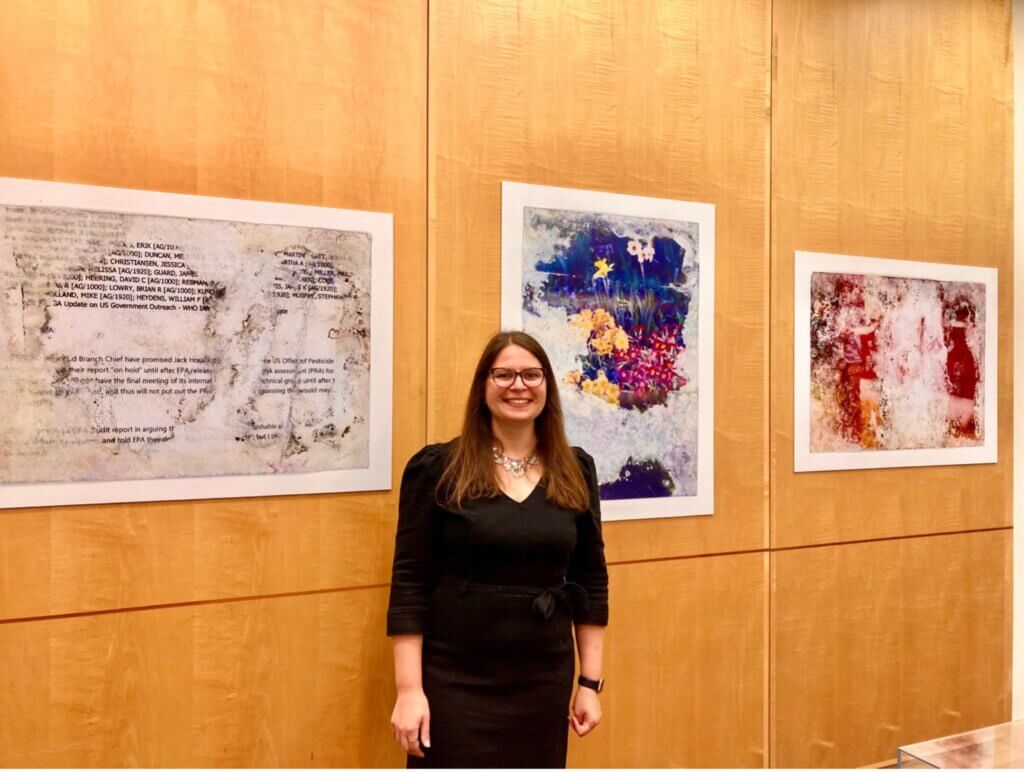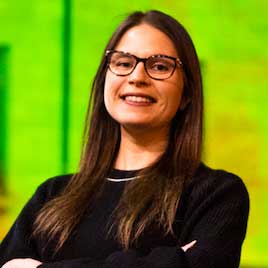Glyphosate Dreams is the culmination of my year-long artist residency with the UCSF Library and is comprised of a series of chromogenic prints (C-prints), letterpress prints, and augmented reality (AR). The exhibition explores the broad-spectrum herbicide glyphosate and its impact on our bodies and land. These works incorporate email exchanges between Monsanto and the Environmental Protection Agency (EPA) as well as imagery from my own photographic image archive. The images are deteriorated in glyphosate and the art arises from the patterns found within the deterioration. Glyphosate Dreams is now on display on the main floor of the Kalmanovitz Library at Parnassus Heights though June 2025.
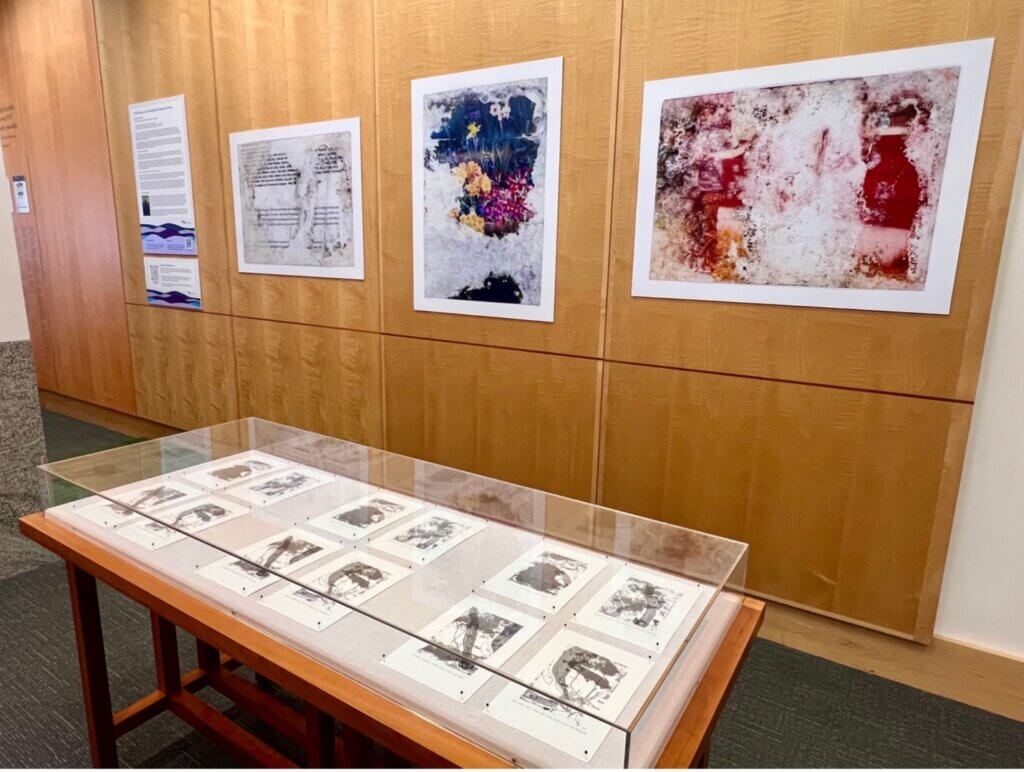
For the exhibition Glyphosate Dreams, my primary research was within the Roundup Litigation Documents within the UCSF Industry Documents Library’s Chemical Collections. I analyzed the email communications between Monsanto and the EPA and discovered enlightening information for the project. The documents I referenced include email exchanges between Monsanto and the EPA discussing the International Agency for Research on Cancer (IARC) findings, correspondence between EPA staff members, the depositions on Johnson v. Monsanto (the first Roundup cancer lawsuit to proceed to trial), and EPA talking points on how to discuss the research being published on these herbicide products.
Chromogenic prints
I selected the most telling and poignant parts of these email exchanges to include in my photographic project. The selected texts highlight the attempts to cover up the research that found glyphosate to be carcinogenic. For this project, I reprinted selected email sections as C-prints, which are photographic prints made from a digital image (or digital scan in this case) and developed using a chromogenic process.
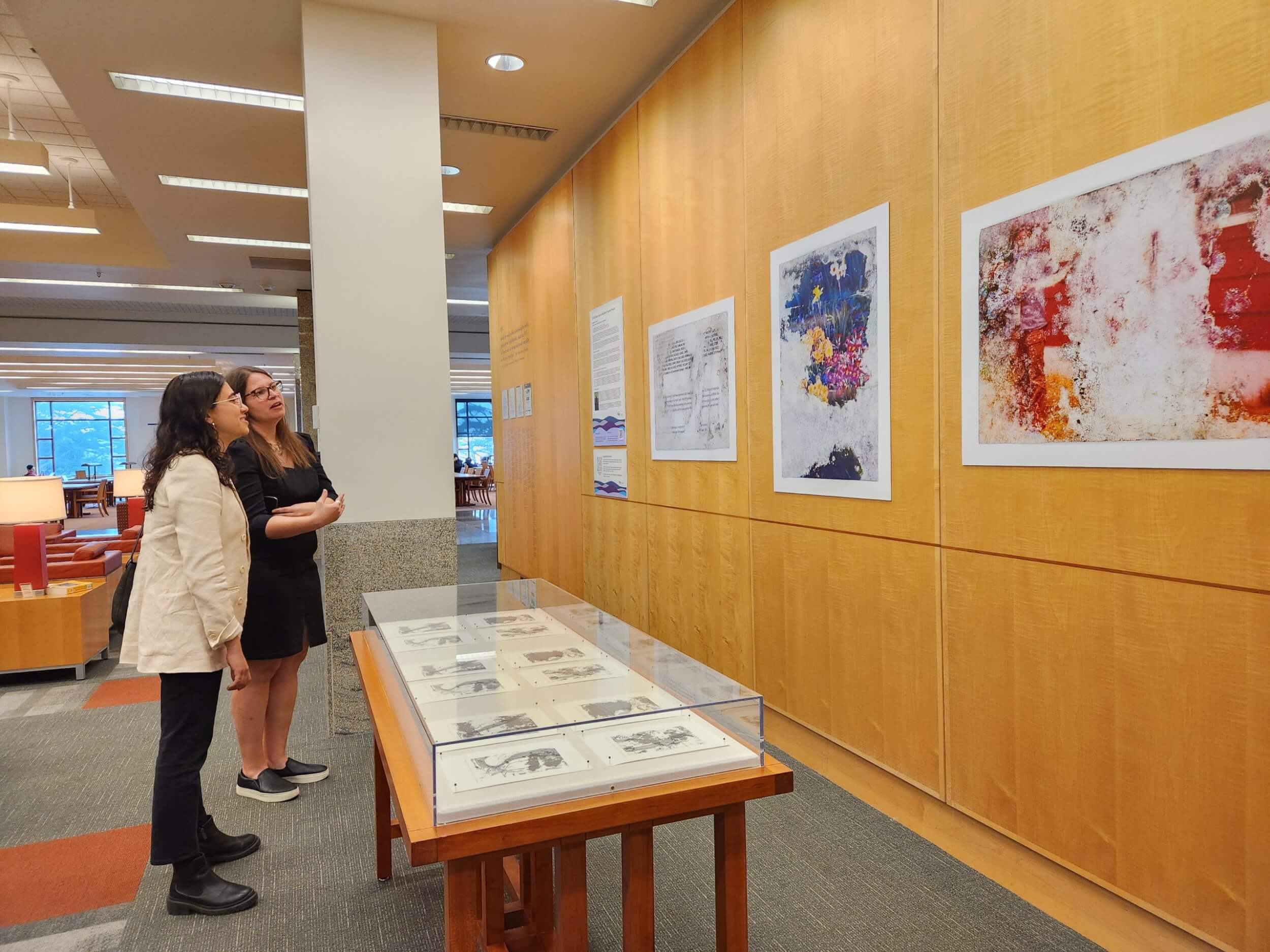
C-prints are composed of three layers of gelatin, each containing an emulsion of silver halide, which is used as a light-sensitive material, and a different dye coupler of subtractive color. When combined and developed, the solution creates a full-color image. I then used glyphosate to physically deteriorate these prints over time. I buried the images in a raised soil bed for a period of five to eight days. Afterward, I disposed of the top layer of soil. The results of these prints varied from partially deteriorated, highlighting specific sections of the print, to completely disintegrated, leaving behind a ghost-like image.
Augmented reality
My AR project takes the patterns created by the deterioration process and animates them into a virtual work via an Instagram filter. This enables the viewer to use the filter on top of the land they stand upon to visualize the detrimental effects instantly. For the library exhibition, a section of artificial turf was placed on the ground for viewers to stand on while they engage with the AR project.
Instagram filter instructions
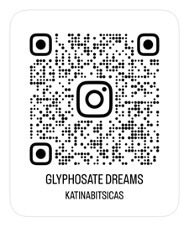
- Be sure that your Instagram app is updated to the latest version on your phone.
- Scan the QR code to activate the augmented reality (AR) project, Glyphosate Dreams.
- When activating AR, point camera towards the ground, and then slowly move your camera towards the ground to progress through the layers of deterioration.
- Share your videos using the AR outside and on the land that you inhabit. Tag @katinabitsicas to participate in the collection!



Meet you at the bottom
A series of letterpress prints titled Meet you at the bottom, also feature the deterioration patterns from the glyphosate-treated images and segments of a lake depth map of Burt Lake, a frequented fishing spot in northern Michigan and the resting place for my father’s ashes. In addition to the impact herbicides have on land, the letterpress prints comment on the effects to our aquatic ecosystems. The deterioration patterns conceal and highlight various indication symbols on the map to guide the viewer’s eye.
The letterpress prints are made from two polymer plates, the bottom a segment of the depth chart and the top, the deterioration patterns that emerged from the C-prints. The text printed on the letterpress reads:
Carbon to carbon, ash to ash, glittery dust, melded with waves.
Guiding compass, sunken evergreens, artificial habitats, endless catch.
I’ll see you soon, the trusty spot, where fish swim, meet you at the bottom.
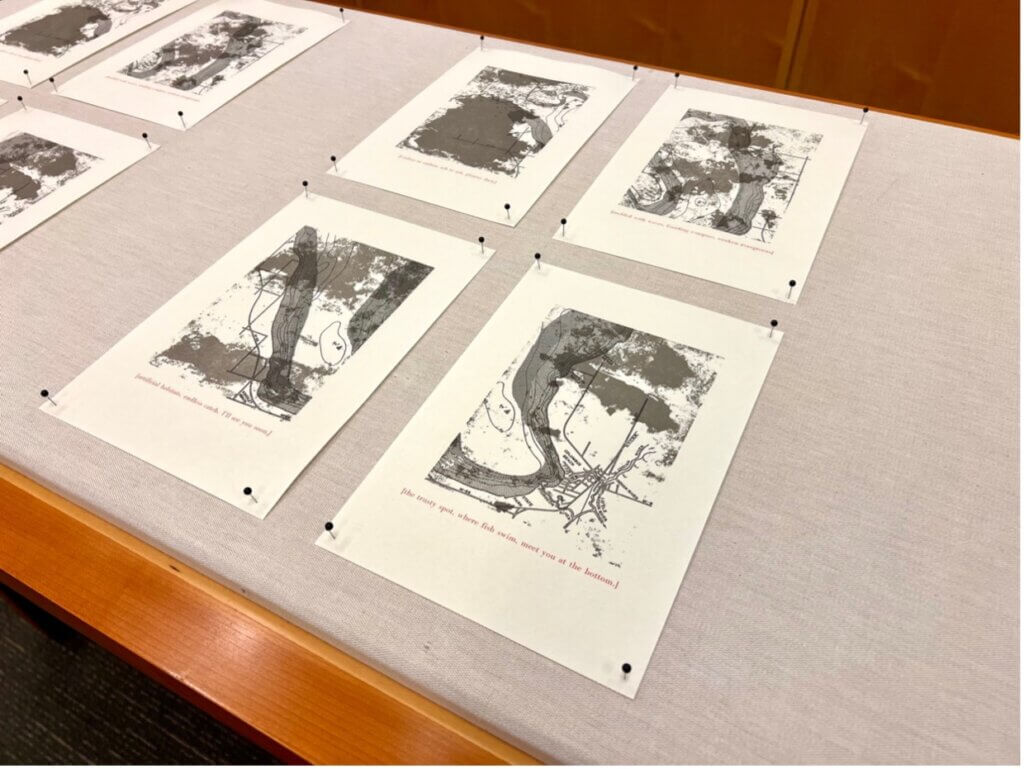
The exhibition opened on June 13, 2024, and will be on display at the UCSF Kalmanovitz Library until June 2025. During the exhibition opening, I gave an overview talk about the production of the works and my experience as an artist in residence at the UCSF Library.


Visitors were able to view the exhibition, engage with the AR component, and ask follow-up questions about the artworks on display. Many interesting questions arose, such as how this body of work could encourage community engagement to promote change.



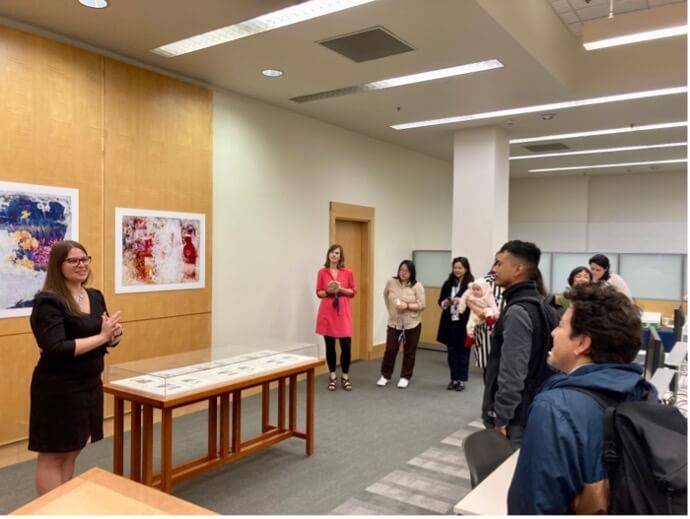
My residency experience with the UCSF Library has been so enlightening and I am very proud of the body of work I produced. I would like to thank all the UCSF Library staff, and especially Dylan Romero, Polina Ilieva, and Kirk Hudson for their kindness and expertise throughout this residency. All works on display will be preserved in the UCSF Archives and Special Collections after the conclusion of the exhibition.
Glyphosate Dreams will be displayed throughout the country this year and in 2025, including solo exhibitions at the Alexander Brest Gallery at Jacksonville University in Jacksonville, Florida, the Sidney Larson Gallery at Columbia College in Columbia, Missouri, and the University of Arkansas-Fort Smith Gallery of Art and Design in Fort Smith, Arkansas. Group exhibitions include UnBound13! at Candela Books + Gallery in Richmond, Virginia and the Ernest G. Welch School of Art & Design Galleries at Georgia State University in Atlanta, Georgia. To keep up to date on these exhibitions and the continuation of Glyphosate Dreams, follow along on Instagram @katinabitsicas.
